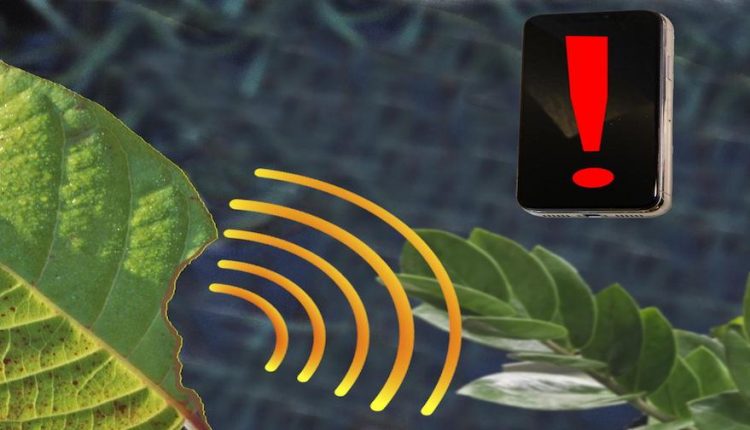
Nanosensors Can Interpret Plant Distress Signals, Improve Yield
While there are tried and true methods to ensure good crop yields and increasingly sophisticated agronomic methods to track plant growth, the ability to track what’s going on with crops in real time could potentially give farmers a real edge in terms of maximizing yields.
Recently, researchers from Massachusetts Institute of Technology (MIT), Singapore-MIT Alliance for Research and Technology (SMART), MIT’s research enterprise in Singapore, and Temasek Life Sciences Laboratory (TLL) have developed a way to study and track the internal communication of living plants using carbon nanotube sensors that can be embedded in plant leaves.
The sensors can report on plants’ signalling waves to reveal how they respond to stresses such as injury, infection, heat and light damage, providing valuable real-time insights for engineering plants to maximize crop yield.
The new nanobionic approach is explained in a paper titled “Real-time Detection of Wound-Induced H2O2 Signalling Waves in Plants with Optical Nanosensors,” published in Nature Plants. It uses sensors to intercept the hydrogen peroxide signals that plants use to communicate internally and displays the data on remote electronic devices such as cell phones, allowing agricultural scientists to remotely keep track of plant health in real time.
“Plants have a very sophisticated form of internal communication, which we can now observe for the first time. That means that in real time, we can see a living plant’s response, communicating the specific type of stress that it’s experiencing,” says Michael Strano, co-lead Principal Investigator at Disruptive & Sustainable Technologies for Agricultural Precision (DiSTAP), an Interdisciplinary Research Group under SMART and senior author of the paper.
The technology can provide much-needed data to inform a range of agricultural applications such as screening different species of plants for their ability to resist mechanical damage, light, heat, and other forms of stress, or study how different species respond to pathogens. It can also be used to study how plants respond to different growing conditions in urban farms.
“Plants that grow at high density are prone to shade avoidance, where they divert resources into growing taller, instead of putting energy into producing crops, lowering overall crop yield,” says Professor Strano. “Our sensor allows us to intercept that stress signal and to understand exactly the conditions and the mechanism that are happening upstream and downstream in the plant that gives rise to the shade avoidance, thus leading to fuller crops.”
Traditionally, molecular biology research has been limited to only specific plants that are amenable to genetic manipulation, but this new technology can potentially be applied to any plant. Professor Strano’s team has already successfully used the approach in comparing eight different species including spinach, strawberry plants and arugula, and it could work for many more.
Funded by the National Research Foundation (NRF) Singapore, the Agency for Science, Technology and Research (A*STAR), and the U.S. Department of Energy Computational Science Graduate Fellowship Program, the study set out to embed sensors into plants that would report back on the plants’ health status. The research team used a method called lipid exchange envelope penetration (LEEP), developed previously by Professor Strano’s lab, to incorporate the sensors into plant leaves.
“I was training myself to get familiarized with the technique, and in the process of the training I accidentally inflicted a wound on the plant. Then I saw this evolution of the hydrogen peroxide signal,” says the paper’s lead author and MIT graduate student Tedrick Thomas Salim Lew.
The release of hydrogen peroxide triggers calcium release among adjacent plant cells, stimulating them to release more hydrogen peroxide and creating a wave of distress signals along the leaf. While the wave of hydrogen peroxide stimulates plants to produce secondary metabolites that can help repair damage, these metabolites are also often the source of the flavors we want in our edible plants. Manipulating this can help farmers enhance the taste of the plants we eat while optimizing plant yield.
Source: Singapore-MIT Alliance for Research and Technology (SMART)
